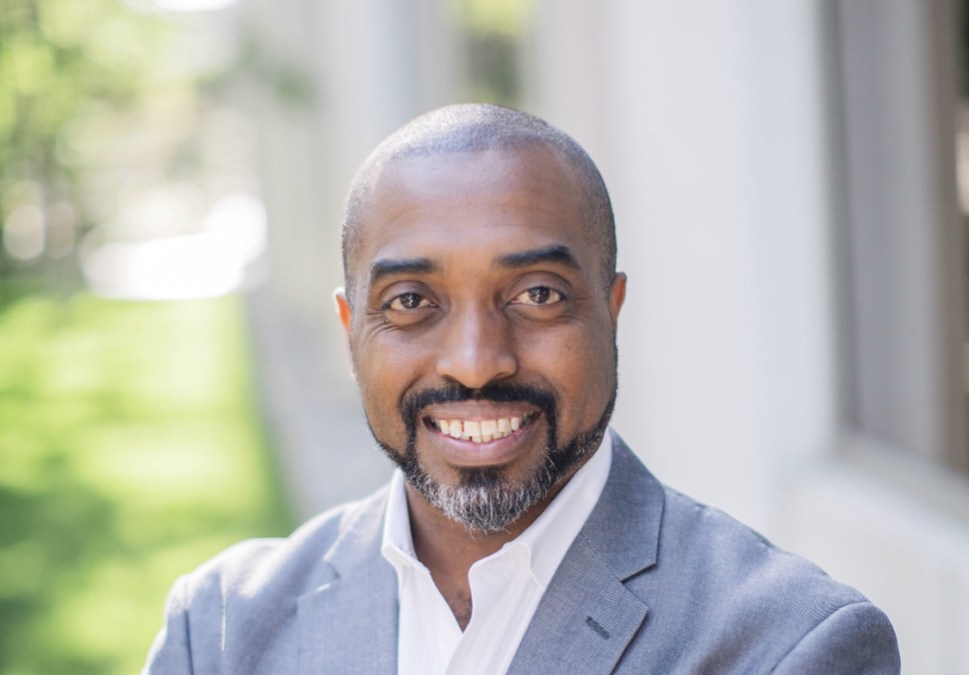Illinois CIO Ron Guerrier wants to get ‘back to basics’

Two months after his appointment in March as Illinois’ new chief information officer, Ron Guerrier says he is keeping one eye on the past and another on the future.
Guerrier, who previously worked for Farmers Insurance, the pharmacy benefits firm Express Scripts, and Toyota, told StateScoop his goal is to get the state “back to basics.” It’s a call for his agency, the Department of Innovation and Technology, to rein in the ambitious agenda laid out by his predecessors and to focus more heavily on preparing the state’s information technology infrastructure for what may lie ahead under Gov. J.B. Pritzker.
In the state’s lineage of CIOs, Guerrier follows Kirk Lonbom and Hardik Bhatt, a former Chicago CIO who spent two-and-a-half years consolidating the state’s disparate IT operations under a single office and ambitiously embracing new technologies like blockchain and “smart city” devices.
In an interview with StateScoop at the National Association of State Chief Information Officers’ midyear conference last week, Guerrier said he’s not interested in casting such a wide net, but would rather reach down to his Haitian roots and do something more practical.
You have a different approach than Kirk Lonbom and Hardik Bhatt. How will this change IT in Illinois?
The philosophy has changed within Illinois DoIT. The one thing I’ll give Hardik tremendous credit for is creating a new agency. To convince not only a governor, but also an organization that is as tenured as technology was in Illinois, to take disparate pieces of technology from different groups, bring it together and centralize it after years of just not doing that, that is not an easy task. Kirk assumed the mantle from that and continued on some of the tenets of that but was starting to focus on rolling up the sleeves and doing the basics. I’d say I’m probably between the two.
Were they getting ahead of themselves?
I think the hard part, especially in technology, is the engineering behind it. OK fine, you’ve got this big goal, you’ve got everyone to accept that centralization makes more sense, but the hard part is building the rocket ship, determining the trajectory, to get to that planet. I think that’s where we as technologists need to roll up our sleeves a little bit more.
So what do you mean when you say you want to get “back to basics?”
I was driving from downtown Chicago to the ‘burbs and I stopped at the ATM and saw a bitcoin ATM. I know about bitcoin, but when I see that in my own hometown, what does this really mean? Does this mean that within a couple years, the residents of Illinois will want to do transactions through bitcoin with the government? Are we even close to having that conversation? Do we have our systems that can render things in that new currency? The answer is absolutely not. The question is what do we need to get there? The answer is we need to have better architecture, better security, better data.
So how do you do that?
With limited funding, we have to make the current systems better. We have to understand the code, we have to hopefully purge dead code, but more importantly we use things like [robotic process automation] to make things better until we do get more funding to make things transformational. I would love to have more money and just roll everything out to make it digital print and all that, however you can’t. So while you have the systems in front of you, make the best with what you have.
My parents are from Haiti and I’ve been back hundreds of times. You see a nation that’s very prideful — I mean we beat Napoleon back in 18-oh-whatever. But everyone on the island has a cellphone, there’s a digital currency of people just trading and bartering through cellphones and systems. In the absence of wealth, you make it work. I’m not saying we need to start thinking like that, but we should be frugal and really respectful of what we have in front of us. You can make the simplest things even better. There’s a way to fix anything if you just put your mind to it and surround yourself with smart people. And plug for the DoIT staff — there’s a lot of smart people.
How do those smart people fit into your strategy?
I promoted four people within the first two months. Chief network officer is now the chief technology officer, we have a new chief architect, our CISO started as an intern ten years earlier. There’s a lot of good talent in house and every single one of them, I asked them the question prior to the promotion, “If you had a higher role, if you were a decision-maker, if you were Hamilton in the room and could make a decision, what would you do?” And they just rattled off all these great ideas.
It’s like if you have a cell-phone, a laptop and a desktop, sometimes you have a different person supporting each technology. And what I want is someone who understands the experience. When the tech leaves the room, is the user whole? That should be the focus, not “Did I get the cell phone working? We’ll deal with the other devices later.” It should be an experiential approach to things. And that comes from my years as a desk-side tech at Toyota. I want to know they leave the room happier than when I came in.
Exciting people is good, but how are you going to make sure you deliver and ensure things actually change for the better?
One thing I’m peppering the team’s head with is that you can’t improve it if you can’t measure it. So, we’re asking people to put their capabilities on a CMMI chart — Capability Maturity Model Integration. On a zero-to-five scale, where do you believe we are at, as self-identified? At some point I’m going to ask a consultant or someone to come in and give us a bird’s eye view. And every year, we’re going to score ourselves, like a grade report. And in some areas, candidly, we don’t need to be a five. We’re a state agency. We don’t need to be a five in service desk. However, if we’re a zero or a one today, we could be a three.
We had a Cabinet meeting and I did two things. First thing I asked was on a Post-it Note, which I handed out, “What do you want from your technology group? In one word or a hyphenated two words — what do you want?” My plan with the feedback is to put it in a big word cloud at the entrance of every one of our DoIT buildings and say this is what our customer expects of us.
The second thing I asked every Cabinet member was when we put in new technology, my ask of you is to revisit your processes. Here’s a great chance for you to look at them again and the second big thing is sunset your old technologies. We’re a chargeback model, so we could help reduce your costs if you help me sunset and eliminate some of the old tech.
So far the feedback has been, “Wait, Technology has never asked what they want of me.” For me, that’s common sense, because I believe in a customer centricity. The customer is my resident, but who are the enablers? The agencies I support, so I always put the resident at the center. This is the funny thing about state agencies, our customers are ourselves, because we all live in the state. Our customers are our neighbors, our kids, our parents. That in itself inspires you to put your best effort in it.
This interview was condensed and edited for clarity.






